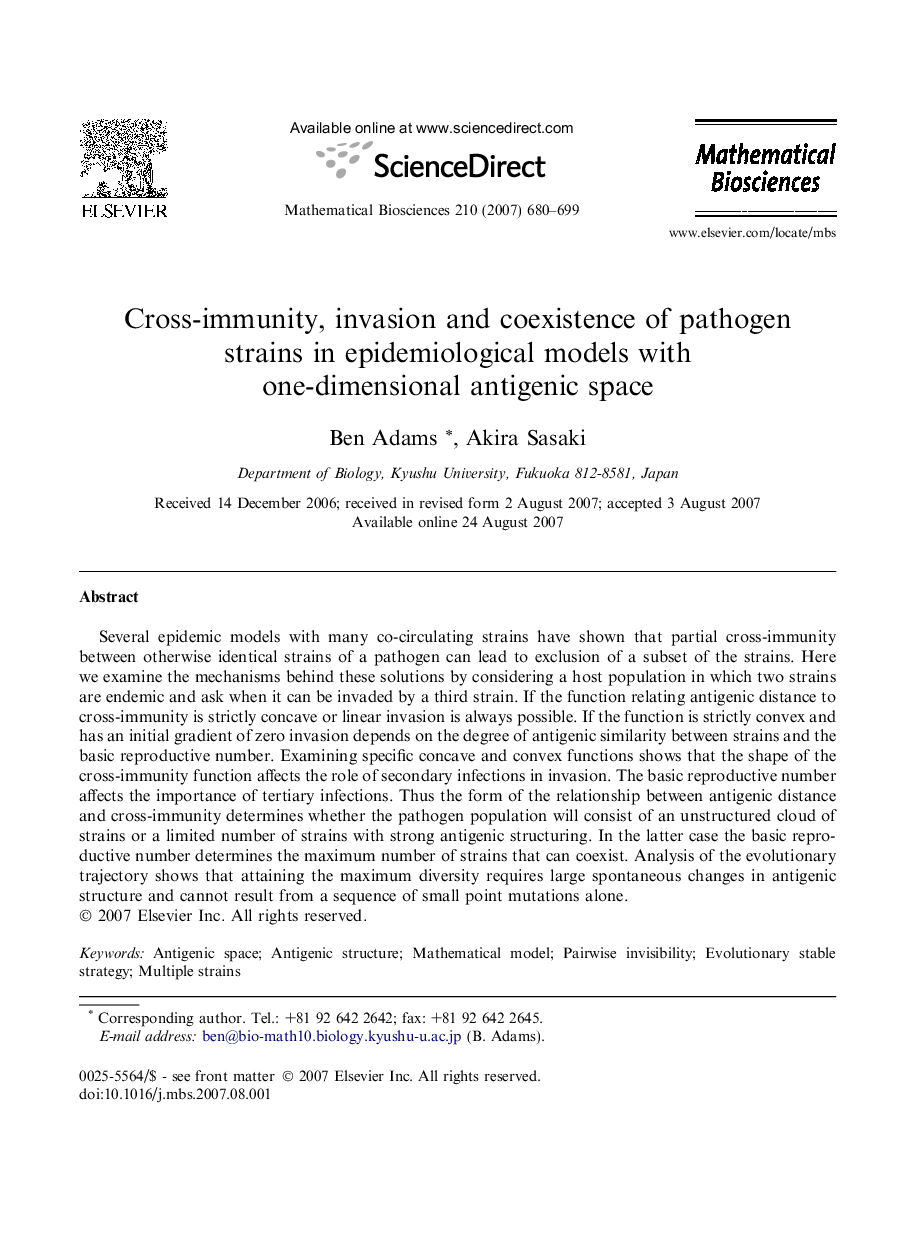| Article ID | Journal | Published Year | Pages | File Type |
|---|---|---|---|---|
| 4500915 | Mathematical Biosciences | 2007 | 20 Pages |
Several epidemic models with many co-circulating strains have shown that partial cross-immunity between otherwise identical strains of a pathogen can lead to exclusion of a subset of the strains. Here we examine the mechanisms behind these solutions by considering a host population in which two strains are endemic and ask when it can be invaded by a third strain. If the function relating antigenic distance to cross-immunity is strictly concave or linear invasion is always possible. If the function is strictly convex and has an initial gradient of zero invasion depends on the degree of antigenic similarity between strains and the basic reproductive number. Examining specific concave and convex functions shows that the shape of the cross-immunity function affects the role of secondary infections in invasion. The basic reproductive number affects the importance of tertiary infections. Thus the form of the relationship between antigenic distance and cross-immunity determines whether the pathogen population will consist of an unstructured cloud of strains or a limited number of strains with strong antigenic structuring. In the latter case the basic reproductive number determines the maximum number of strains that can coexist. Analysis of the evolutionary trajectory shows that attaining the maximum diversity requires large spontaneous changes in antigenic structure and cannot result from a sequence of small point mutations alone.
